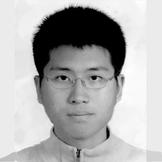Songyu Yang

Department of History
PhD Candidate
The Chinese University of Hong Kong
Mr. YANG Songyu is a PhD candidate from Department of History, The Chinese University of Hong Kong (CUHK). He got his BA degree in History from Nanjing University, and his MA and Mphil degree from The Chinese University of Hong Kong. His major research field is ancient Chinese history, especially focusing on military and social history in Qin-Han dynasties. He also has interest in studying the so-called nomadic peoples who lived in the central and east part of ancient Eurasia. In CUHK, Mr. Yang has been tutors of several undergraduate and postgraduate courses, and his current research project is about the mounted units and warhorses in Classic China.
Ancient China on Horseback: Mounted Units and Warhorses from Qin Dynasty to Southern and Northern Dynasties
Songyu Yang's current research project is Ancient China on Horseback: Mounted Units and Warhorses from Qin Dynasty to Southern and Northern Dynasties. This research will focus on equestrians and their warhorses in Ancient China, specifically during the Early Chinese Imperial Age, namely Qin Dynasty to Southern and Northern Dynasties (c. 221 B.C.- A. D. 589), from a Eurasian perspective. By discussing both the men and warhorses, the main two aspects, he hopes to trace back to the early days of ancient Chinese riders and understanding their roles in the history. In Chinese classics, the word “Ji” or “Qi-shi” were often used to express the meaning of “mounted military men” or “soldiers on horseback” in Chinese literally. These ancient riders ever performed great services in Chinese warfare and military movements, during the times of various dynasties in China Major, before the mechanized units were introduced or established in this far-east land. However, many former researches on Chinese mounted units or Qi-shi were often treated as a comparatively lesser component of the general military study, and there were only limited works conducted on this field exclusively. Though some scholars have made inspiring progress on comprehending Chinese mounted units and their possible stratum in both ancient army and the society in China, the detailed information of these soldiers and their horse companions remain vague with full of uncertainty.
It is indubitable that the Chinese Qi-shi placed himself in a key post of both the hinterland guarding and the frontier defense, particularly when facing the extremely maneuverable nomadic army which consisted of almost all mounted forces and threatened the central dynasties for centuries. Meanwhile, because of the fact that the strike from horseback was so dominating in the ancient battlefield throughout the Continent, Chinese mounted units thus formed a key cornerstone that constituted the whole military system in ancient China, and became almost the most efficient military power in combats, particularly as the situation occurred in Former Han Dynasty. Therefore, the academic topics about the Chinese mounted strength should also be of great importance. On the other hand, Chinese warhorses, the intimate mounts of the riders seemed to be more seriously ignored in modern history research, even if the horses de facto contained valuable historical information just as much as the men did, if not more. Since great mount breeds for warhorses were not indigenous to China, the Chinese imperial courts had to import breeds from outside, either for direct military use or for subsequent nurture and breed improvement. In this sense, it is not hard to reconsider the warhorses in Ancient China from a more social or hippological perspective and re-evaluate their influence, such as to the ancient trade routines and even cultural interaction. Further speaking, this is the main reason that Songyu Yang insists we may not merely investigate the issues on Chinese ancient riders and warhorses in a narrow regional angle or in a purely East-Asian circumstance, but a broad Eurasian vision will be relatively more reasonable, as H. G. Creel ever pointed out in his paper when analyzing the horse trade in Ancient China.
In this future research, Songyu Yang will highly value the comparative methodology in study, especially when referring to the classical records concerning the mounted units and horses, in order to reveal some hidden factors embodied in the other civilizations of this Continent that might make impacts on the Chinese Qi-shi’s establishment and development. The archaeological materials including the artifacts, images like stone carvings, frescoes, paintings on bricks or vessels, and unearthed texts as the bamboo slips excavated in China will also definitely be highlighted in this research. Hippological studies is also ought to be applied to make the discussion about the warhorses or ancient husbandry more accurate and detailed in natural scientific standard. There are still lots of interesting mysteries that can be explored in the Chinese Qi-shi study. Hopefully this research will bring some of them to light. It is predictable that we could perfect our knowledge about Ancient China, if having more information about these mounted units. Comparing with the previous studies, the detailed Qi-shi study tend to exemplify the public history research in some way. In his study, he realized that in former Han Empire, a Qi-shi who garrisoned at North-west boarder was officially rationed only 1 dou 7 sheng coarse grain per day if together with his horse, and 6 sheng if not, which clearly implied the difficult life for a quartering soldier whose food supply was only be settled to meet the basic need of an adult man. What’s more, when we study on the mounted units, a phenomenon may be noticed that the so-called ideological periphery or the debate on Hua (the civilized) and Yi (the barbarians) constructed in the traditional historiography seemed to a triffle, and the whole continent was widely connected since the time long before the modern period.
